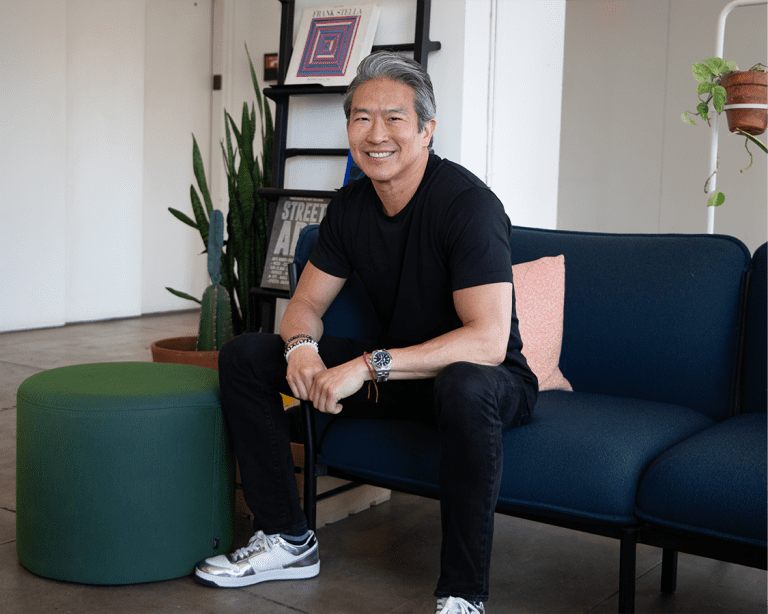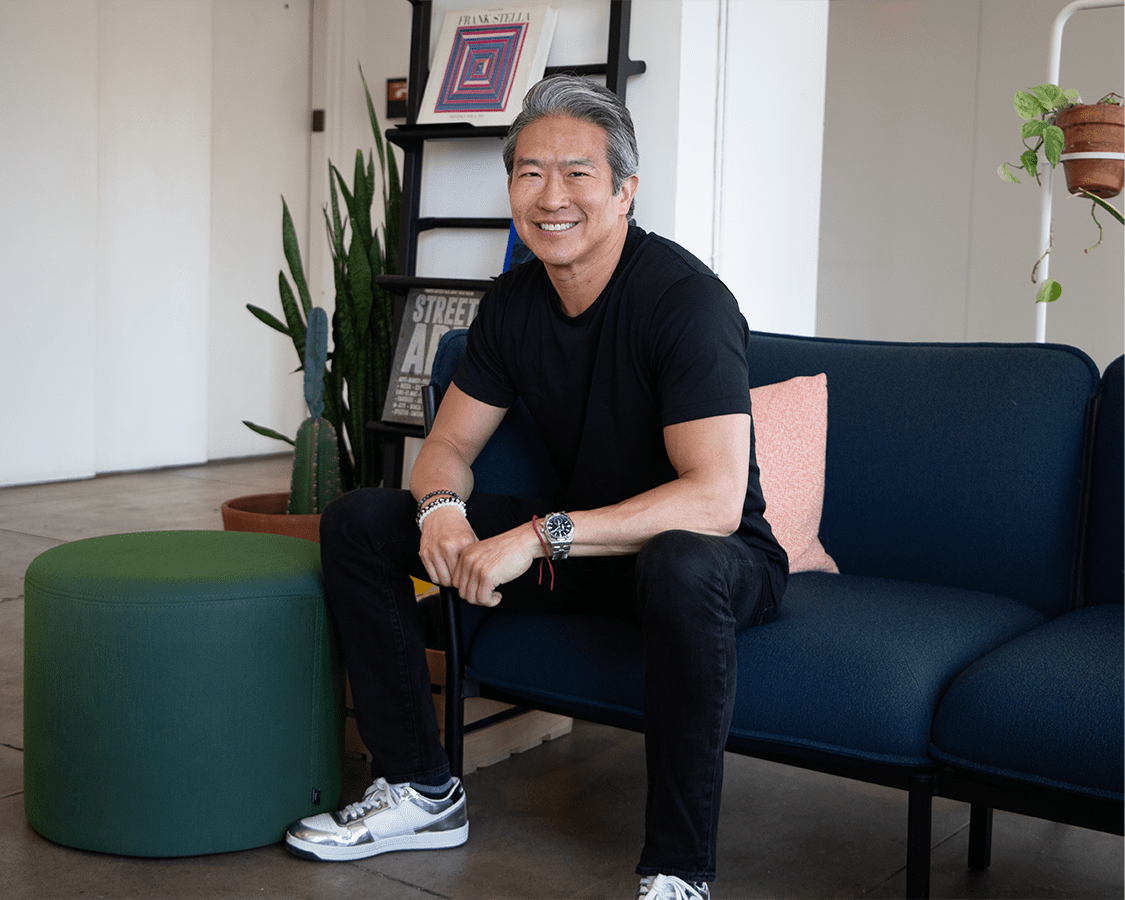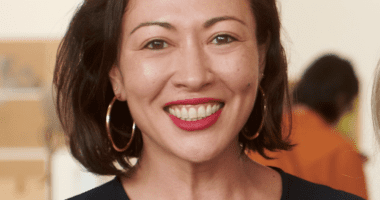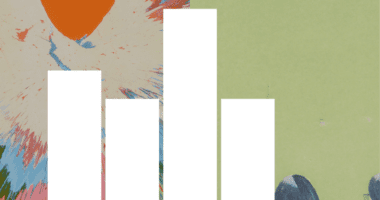The Artsy Asks Series
Experts answer the most important questions for galleries today.
Who
Artsy CEO Jeffrey Yin shares how the company is continuing to innovate to support galleries and collectors.

Jeffrey Yin, Artsy’s CEO.
Jeffrey Yin, formerly CFO and general counsel of Artsy, became the company’s new CEO on July 1st. Yin takes over the post from Mike Steib, who led the company for five years and will continue to serve on Artsy’s board.
Yin joined Artsy in 2019 and has been responsible for strategy and operations across the business, as well as corporate development and investor relations. He played an integral part in building and growing Artsy to support over 4,000 galleries, auction houses, art fairs, and institutions in over 100 countries. Yin also led the expansion of Artsy’s transactional capabilities in several key markets globally, and worked closely with business and product leaders across the company to innovate and deliver value to Artsy gallery partners and the art ecosystem more broadly.
Now, as he leads the company as CEO, Yin is focused on maintaining and enhancing Artsy’s existing business strategy with an increased focus on the company’s efforts to support gallery partners and strengthen the Artsy product.
We sat down with Yin to discuss his vision and strategy for Artsy, new developments, and his message to gallery partners. An avid art collector himself, Yin also tells us about a meaningful recent acquisition.
What message would you like to convey to Artsy’s gallery partners and the broader art community as you begin your tenure as CEO?
My message to galleries begins with a reminder: Artsy’s vision is “a future where everyone is moved by art every day,” and our mission is to “expand the art market to support more artists and art in the world.” We also have five core company values, the first of which is “For the Love of Art.”
Everything the Artsy team and I do is to further our vision and mission. Many of our team members have formal backgrounds in art, and many don’t. But we all share a dream where collectors, new and experienced, can discover and purchase works of art that they love and find artists that resonate with them.
Supporting galleries is crucial to this ecosystem. Galleries are the critical bridges connecting artists with collectors and fostering a thriving, sustainable art market.
Tell us about your Artsy journey so far. What have you learned about the art market?
Over the past five years at Artsy, I’ve had the joy of immersing myself in the art world, gaining insights that shape my understanding and approach.
One of the key lessons I’ve learned is the importance of accessibility and education. The art market can often seem impenetrable to those not deeply embedded within it. I’ve experienced firsthand how vital it is to provide resources and guidance to new collectors. Artsy’s role in this has been pivotal, offering tools and insights that make art accessible to everyone.
I’ve also come to appreciate the interplay between the digital and physical art worlds. While traditional physical models remain crucial, the digital realm offers different opportunities for additional reach and engagement. Traditional galleries are often limited by their physical location, but through our platform, they can showcase their works to a global audience. This hybrid approach ensures that art remains accessible and is seen by as many people as possible, regardless of geographical boundaries.
Another significant learning has been the power of data and curation. By utilizing advanced algorithms and data-driven insights, combined with the art expertise of our in-house team, we’ve been able to curate personalized experiences for collectors, enhancing their journey and deepening their engagement. This enriches the collector experience and drives demand and growth within the market.
The resilience and adaptability of the art market have also been striking. Despite economic fluctuations and global challenges, the human passion for art endures. I’ve witnessed artists, galleries, and collectors continuously innovate to navigate these changes, often emerging stronger and more connected.
Finally, the importance of supporting emerging artists and galleries has been a constant theme. By providing these critical groups with a platform to showcase their work and connect with a global audience, we are fostering their growth and enriching the entire art ecosystem.

Demand enables Artsy gallery partners to see which artists and artworks collectors are actively hunting for by surfacing the alerts they set on Artsy. Collectors receive personalized notifications when a gallery publishes work that matches their alert.
How do you envision Artsy evolving under your leadership in the next five years?
The team at Artsy, under the leadership of Carter Cleveland, then Mike Steib, has built a strong foundation, and I’m grateful for that.
We provide best-in-class editorial coverage of significant artists and art world moments; offer a strong curatorial point of view; and have a powerful discovery process for experienced collectors who are looking for specific artists’ works on both the primary and secondary markets.
In the next five years, you’ll see Artsy evolve to have a more robust offering for collectors who aren’t as deeply connected to the art world. These aspiring collectors may not yet have a defined point of view on the type of art that resonates with them. We believe these individuals make up a significant portion of the potential art market and are committed to serving them.
For this group of burgeoning collectors, our goal is to highlight well-priced, compelling works of art, making it easier to discover, connect with, and purchase art they love. By doing so, we aim to broaden the art market, supporting more artists and galleries and fostering a more inclusive and dynamic art community.
Can you share your thoughts on the current state of the art industry and the biggest opportunities you see for galleries today?
The art industry is currently weathering a challenging period. The market is anemic and galleries are stretched. However, within these challenges lie significant opportunities for galleries to innovate and thrive.
One of the biggest opportunities for galleries, in my opinion, is to balance their approach to in-person art fairs with their online presence. Galleries can focus on the most strategically important art fairs that resonate with their program and leverage online platforms to reach a broader audience continuously.
Collectors often aren’t able to see the full range of artworks they may be interested in, leading to missed opportunities for buyers and galleries alike. By partnering with Artsy, galleries can promote all of their artists and inventory, which then, through our advanced personalization, is surfaced to collectors who have previously engaged with similar artists and works. We also have fantastic curation that helps collectors discover new artists. As a result, we help build new relationships between galleries and collections.

What excites you most about the future of Artsy and the potential for growth in the art market?
Art is at the top of the luxury pyramid, yet many individuals who purchase expensive watches, jewelry, or even boats still find the art market impenetrable. Artsy is uniquely positioned to bridge this gap. We have an incredible opportunity to continue to democratize access to art and support a thriving, diverse community of artists, galleries, and collectors. Many people want to collect art but lack the knowledge or confidence to start. Artsy plays a pivotal role in educating and guiding these aspiring collectors, making art more accessible, and fostering a new generation of art enthusiasts.
Our ability to curate and recommend artworks tailored to individual tastes can help every collector find pieces that resonate with them. This personalized discovery process enriches the collecting experience and opens doors to new opportunities for artists and galleries. For example, I’m a big fan of our Curators’ Picks: Emerging collection and Artsy’s online fair Foundations, both of which are carefully curated by our in-house team. Through spending time with those works, my recommendations on Artsy are geared towards early-career artists from small and mid-size galleries across the globe. I’ve found myself drawn to fresh approaches to figurative art and still lifes. And from there, I’ve been discovering artists whose works speak to me—including queer artists and artists of Asian descent.
In the past couple of years, two of my favorite artists I’ve found on Artsy, and really feel a connection to, are Kevin Sabo and Adrian Kay Wong. Both artists show with multiple Artsy gallery partners. I’m able to see so much of these artists’ works on Artsy, and because I follow both artists, I receive notifications when new works are added. I’ve learned more about them through our own content, as well as through connecting with their galleries, and purchased works by both artists via Artsy recently. Excitingly, in turn, my recommendations on Artsy are more and more tailored to what I like. As a relatively new collector, this has been crucial as I’m honing my taste and identifying the types of works that are important to me. It’s also wonderful to see that through inquiring on and purchasing these artists’ works on Artsy, I’m also building genuine relationships with their gallerists, who then introduce me to more artists from their programs that I love.
The digital transformation of the art market has come a long way even since I joined Artsy five years ago, but there’s still so much potential. As more collectors turn to online platforms to discover and purchase art, Artsy’s global reach and innovative technology will only improve, connecting artists and galleries with a wider audience than ever before. This also fosters a more inclusive art community that celebrates diverse voices and perspectives. This vision of a connected, thriving art ecosystem is what excites me most.

What are some of your favorite pieces in your collection? And how do they reflect your personal taste?
I love every piece I’ve collected; they all hold personal meaning.
One piece I recently acquired—which isn’t even hung yet—is Golden (2024) by Adrian Kay Wong, which I purchased from Artsy partner Uprise Art. Adrian is an L.A.-based Chinese American artist, and Uprise Art is a gallery based in New York, actually very close to the Artsy office. I had been wanting to collect a work by Adrian for some time and Golden was the perfect piece for me. The bright yellow color of the work and the circular composition of the vase touching the pear, then sweeping up towards the pear wrapper, immediately caught my eye.
The piece was part of Adrian’s most recent show at Uprise Art and I went to the opening, where I met Adrian, who told me more about his practice and this particular work. Golden speaks to me as a snapshot of the Asian American immigrant story. It’s part of Wong’s series “Upon a Golden Mountain,” which tells the story of the Chinese immigrants drawn to San Francisco during the mid-1800s seeking fortune in the new world.
My parents immigrated to the U.S. in 1964, and I vividly remember them serving Asian pears at the mah-jongg parties they would hold for their friends when I was growing up. But the immigrant story is also one of hardship and sometimes rejection. I remember my parents telling me how my dad lost his job in a restaurant because he mistakenly tore open a tea bag to serve the tea loose in the cup rather than in the bag; or my mother walking up and down Market Street in San Francisco looking for an entry-level job.
If you look closely at the work, you can see a tiny dead bird on the vase. Those hardships and setbacks are represented in this otherwise idyllic work. We come to the land of opportunity, bringing some of our traditions with us, experiencing personal triumphs and setbacks, and staying tethered to our community as much as we are to the new world.
I truly see and feel my family story when I look at this piece, and I love it.



